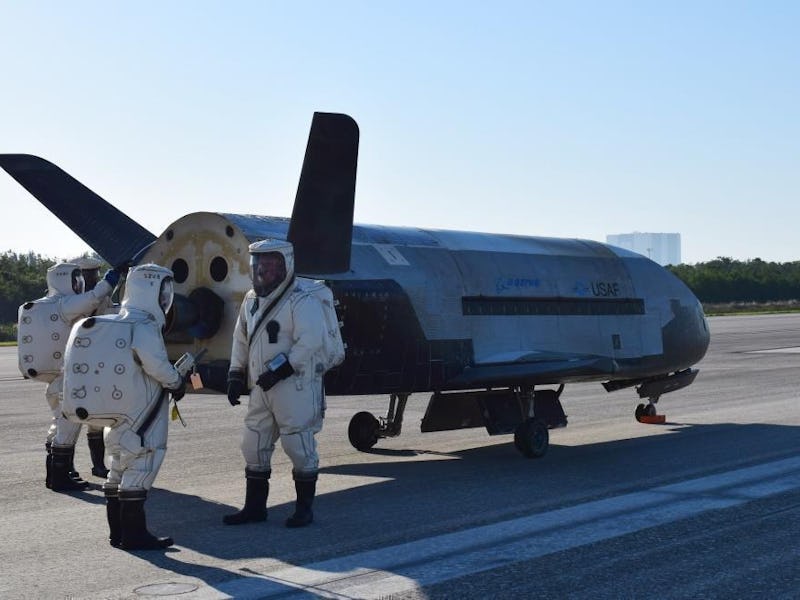SpaceX Gets Deeper Into the Spy Game with the X-37B
First an NRO mission, now one for the Air Force.

This week the U.S. Air Force announced that SpaceX will launch the enigmatic X-37B space drone into Earth’s orbit this August. This will be the fifth trip the reusable drone makes into space, and its purpose — beyond conducting various spy missions — remains a mystery.
Although revealing nothing about the X-37B’s intentions, U.S. Air Force Secretary Heather Wilson testified this week how the added competition created by SpaceX will drive down costs.
“Competition is reducing the cost of launch services,” Wilson said Tuesday at the U.S. Senate Armed Services Committee. “Currently we’ve got two providers for medium and heavy launch.”
United Launch Alliance, the joint-partnership between Boeing and Lockheed-Martin, certainly won’t welcome the competition from SpaceX. The X-37B spaceplane four times previously blasted into orbit on the ULA-made Atlas V Rocket.
Now that SpaceX’s Falcon 9 — the same rocket that sends food, toothpaste, and scientific experiments to the International Space Station — has landed on the scene, costs per launch could go way down, because the Falcon 9 can land safely back on Earth, making it reusable. And powered by nine engines, the Falcon 9 can lift over 50,000 pounds into low earth orbit.
The reconnaissance game is new for SpaceX. In April, SpaceX launched its first spy satellite for the National Reconnaissance Office.
The X-37B spy plane only needs a launch vehicle. It has landings covered, as evidenced by this Air Force video released in May when the spy plane last returned from space.
Once the SpaceX rocket drops off the X-37B, the drone will likely remain in Earth’s orbit for quite some time. The drone returned to Earth on May 7 after spending nearly two years in space, dirty and soiled after passing through Earth’s atmosphere. This fourth trip brought the reusable drone’s total space time to an impressive 2,085 days.
The Air Force has stayed mum on the drone’s extracurricular activities, offering the public mostly vacuous words on the X-37B’s mission. Upon its May landing, Lt. Col Ron Fehlen, the X-37B program manager, offered the following statement:
“We are incredibly pleased with the performance of the space vehicle and are excited about the data gathered to support the scientific and space communities.”
Thanks Ron – we’re excited, too.
The U.S. Airforce inspects its trusty re-usable space drone.
This leaves room for all sorts of theories about the X-37B. One suggestion, from Brian Weeden, a former orbital analyst with the U.S. Air Force, is surveillance. “It’s probably using that new technology to observe the Middle East and Afghanistan,” Weeden told Space.com, referring to the second X-37B mission, wherein the drone repeatedly flew over the same airspace.
Whatever the X-37B is doing up there, SpaceX’s rise as a rocket competitor is making the drone’s work cheaper than ever before.